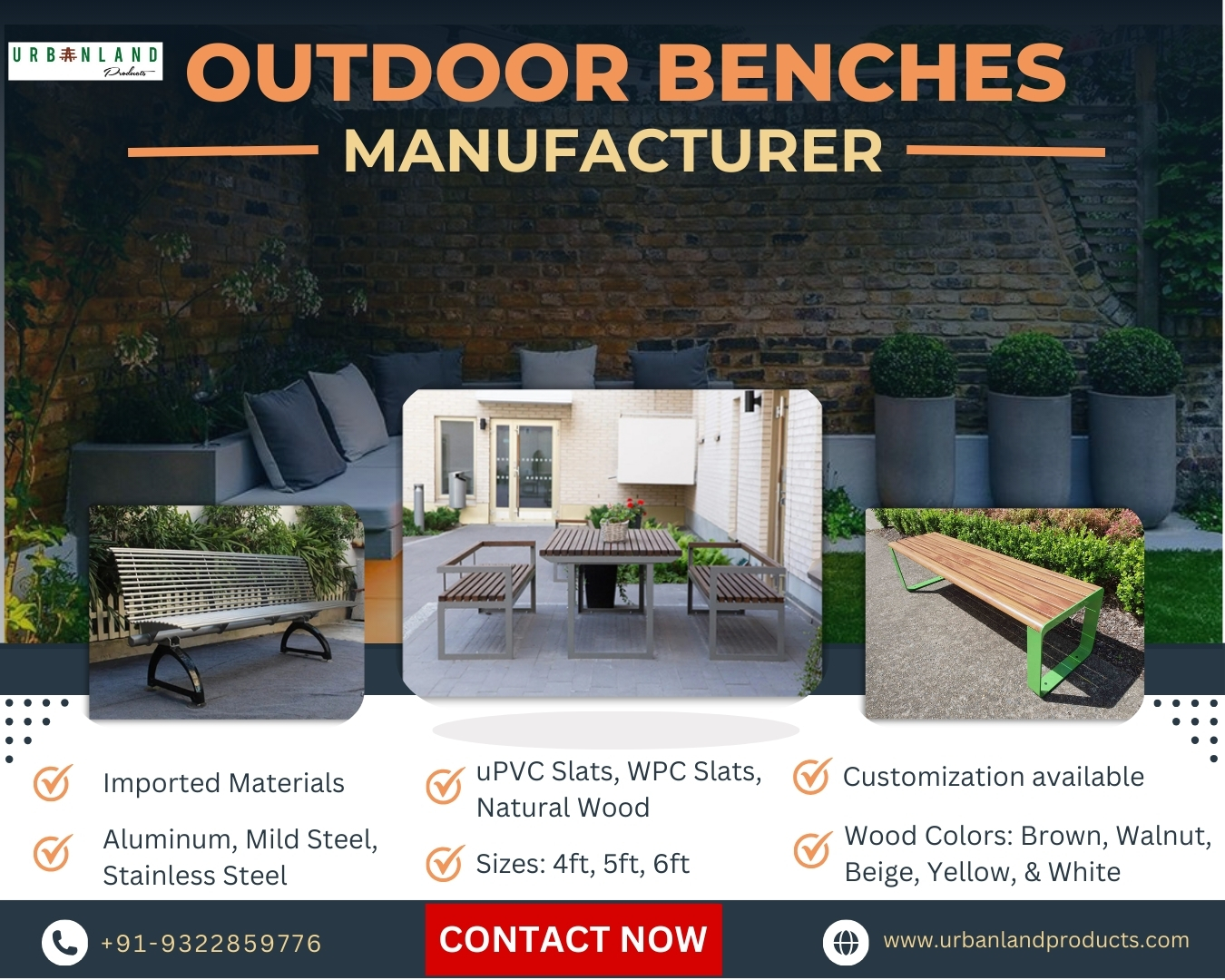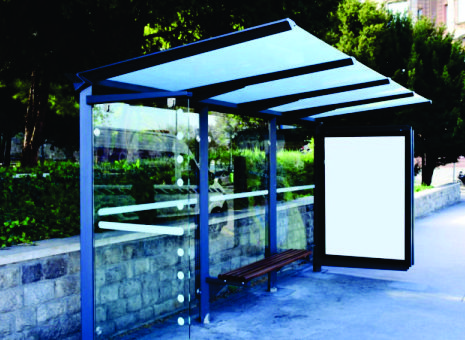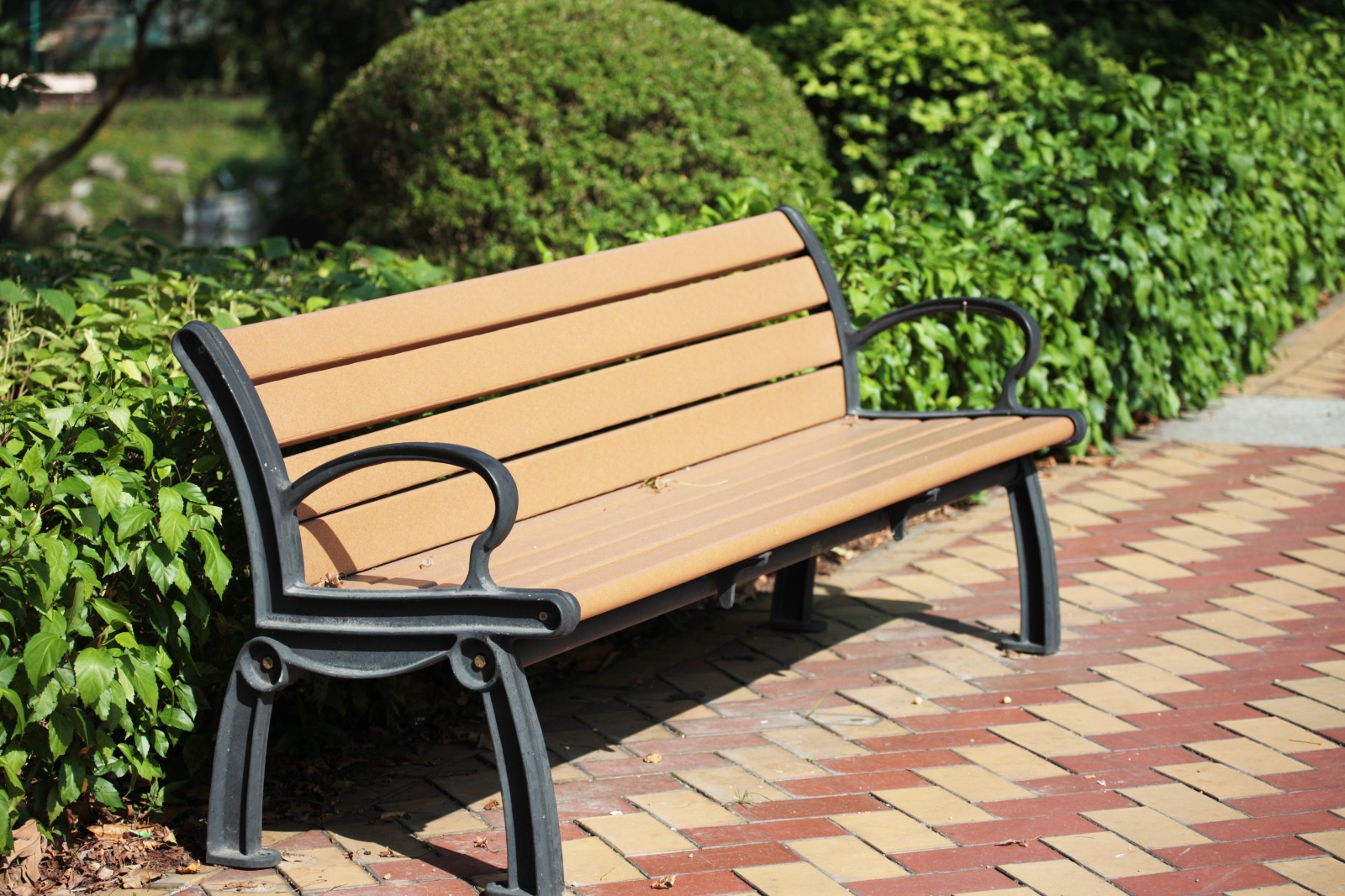5 Key Comparisons for uPVC and WPC: Which wood is best for Outdoor Benches
When selecting the ideal material for outdoor benches, the choice between WPC (Wood-Plastic Composite) and uPVC (unplasticized Polyvinyl Chloride) hinges on specific attributes. WPC has various special characteristics like the best durability and moisture resistant. It also has protection from UV rays & decaying thus providing the natural look of the wood while requiring minimum maintenance. But uPVC offers in-built weather resistance and low maintenance, ideal for enduring various climates without corroding. While WPC leans towards a more natural aesthetic, uPVC presents a modern, consistent appearance. Budget considerations & environmental impacts are also taken into consideration. Finally, the choice depends on various factors, including aesthetics, durability, maintenance & budget based on different outdoor settings.
Let’s discuss 5 important factors to consider while selecting which wood is the best for outdoor benches: WPC or uPVC.
1. Durability & Weather Resistance of uPVC and WPC
- The uPVC material has a robust strength. It is because it solely consists of PVC without added plasticizers, thus resulting in a rigid structure. Due to this material composition uPVCs are getting remarkable durability thus enabling it to withstand long exposure to the worst environmental conditions without degradation.
The material’s all-weather non-degradable quality for factors including - UV rays, moisture, extreme temperatures & chemical exposures would ensure a minimal impact on structural integrity. uPVC resists corrosion, fading, warping, and cracking, making it an ideal choice for a garden bench. It is the best option for Industrial uses as it can fight environmental changes for a much longer period.
- The WPC material is a combination of wood with the extended strength of plastics. Though the material provides good durability it is less resistant to environmental factors as compared to uPVC. Due to the composite nature of WPC, it provides resistance against rotting, decay, and insect damage which affects normal wood. Other environmental factors like UV rays, high humidity, or rapid temperature changes can lead to surface degradation, color fading, or slight warping.
The in-built strength of WPC enables it to resist cracking, splitting, etc. which are the common issues in traditional wood materials. The material can withstand mild to moderate weather conditions and thus it becomes suitable for a garden bench. The benches must require frequent maintenance to preserve their appearance and structural integrity. Proper care and occasional treatment need to be done to make it a successful choice for a garden bench & structures seeking a balance between natural aesthetics and enhanced durability.

2. Environmental Impact of uPVC and WPC
- uPVC is a rigid form of PVC that is free from plasticizers, offering much durability, weather resistance, and low maintenance. Its application spans a wide variety of ranges including a steel bench, window frames, pipes, cladding, roofing materials, etc. Due to its durability and ability to withstand harsh weather conditions, it is enhanced with amazing factors like long lifespan, reducing the frequency of replacements, and subsequent resource consumption.
Even though uPVC has so many advantages, it badly affects the environment during its production and disposal. During the manufacturing process, chlorine is used, which might lead to the release of harmful byproducts. Moreover, uPVC isn’t easily recyclable due to its complex chemical structure, potentially leading to its gathering in landfills, incineration (a waste treatment process that involves burning substances in an enclosed space. The process converts waste into ash, flue gas, and heat) thus causing environmental concerns.
- On the contrary to uPVC, WPC which is a unique blend of fibers and thermoplastics, presents itself as an eco-friendly alternative to traditional wood. The production process of WPC involves recycling wood wastes and utilizing recycled plastics, thus reducing the demand for new materials. This combination of materials gives a main product which is durable, and low maintenance which is often used in decking, fencing, and outdoor furniture or a steel bench. WPC's durability & resistance to moisture, rot, and insects make it a sustainable choice, reducing the need for frequent replacements and minimizing waste.
However, the environmental impact of WPC can’t be fully neglected. During the manufacturing process of WPC it requires energy and while utilizing recycled materials some types of WPC may contain additives or chemicals that have a bad impact on the environment. Moreover, after the end of the life cycle, it would cause various challenges during its disposal. It would be difficult to separate the components for recycling thus leading to an increase in landfill waste.
3. Maintenance Requirement of WPC and uPVC
- uPVC, celebrated for durability and weather resistance, demands minimal upkeep. It naturally repels moisture, rot, corrosion, and fading, remaining sturdy and appealing over time. Cleaning is effortless: a mild soap or soapy water wipe-down and occasional hosing suffice. Unlike wood, it eschews staining or painting, cutting maintenance efforts. Its resilience in harsh weather makes it ideal for window frames, pipes, and cladding, prioritizing durability and ease of care. uPVC is exceptionally strong, enduring without much effort. Unaffected by water or sun, it always looks great. Simple cleaning with soap and water and no need for painting make it perfect for windows, pipes, and walls, ensuring long-lasting, low-maintenance solutions!
- WPC is a mix of wood and plastics that need less care than regular wood. It fights off water, bugs, and bad weather, staying nice with easy soap and water cleaning. Stronger water can help clean tough dirt. But not all WPCs are alike; some last longer and need different care. So, how you take care of it depends on what type you have. Cleaning is easy, and it stays looking good for a long time!

4. Which material is costlier WPC or uPVC
- WPC, being a blend of wood fibers and thermoplastics, can vary in cost due to differences in materials, manufacturing processes, and quality. Generally, WPC tends to be more affordable upfront compared to natural wood due to its utilization of recycled materials and reduced maintenance expenses over time. However, the price of WPC can fluctuate based on the quality of materials used and the manufacturing techniques employed. Higher-quality WPC, offering superior durability and enhanced resistance to environmental elements, may come at a higher cost compared to lower-quality alternatives.
- Conversely, uPVC, a rigid form of PVC, is often used in various applications such as window frames, pipes, and cladding. Its pricing typically depends on factors like the thickness, size, and design intricacies of the product. uPVC is known for its durability, weather resistance, and low maintenance, factors that can contribute to its initial cost being higher than some WPC products. However, its long-term cost-effectiveness emerges from its durability, low maintenance requirements, and longevity, often offsetting the higher initial investment.
5. Advantages and Disadvantages of uPVC
- There are many advantages of using uPVC as the material for a park bench. Here are some:
(i) Durability: uPVC is highly durable which means it has a long life period. This also means that it is resistant to weathering, corrosion & rotting. Due to this ability it can be used for various outdoor furniture like a park bench.
(ii) Low Maintenance: Due to its durability factor the maintenance required for uPVC is much less as compared to traditional materials like wood. uPVC doesn’t need painting and can be easily cleaned with soap and water. This would help us in saving time and our hard-earned money.
(iii) Energy Efficient: uPVC has excellent thermal insulation properties, which can help in maintaining indoor temperatures. It also reduces energy costs for heating or cooling.
(iv) Sound Insulation: It provides good soundproofing thus reducing external noise. Due to this reason it is ideal for urban areas or areas with high noise pollution.
(v) Affordability: uPVC is generally more affordable than materials like wood or aluminum. Due to this reason it is a cost-effective option for construction.
(vii) Chemical Resistance: It is resistant to various chemicals, making it suitable for use in areas exposed to chemical substances.
(viii) Recyclability: uPVC is recyclable, which can be beneficial in reducing environmental impact and promoting sustainability.
- Along with the above-mentioned advantages, there are many disadvantages for uPVC. Let’s look into some of those:
(i) Not Suitable for High Temperatures: uPVC can deform under high temperatures. Extreme heat can cause warping or bending of the material.
(ii) Potential for Discoloration: Over time, uPVC surfaces may discolor due to exposure to sunlight, leading to a faded or yellowed appearance.
(iii) Not Biodegradable: uPVC is not biodegradable and can persist in the environment if not properly recycled, contributing to waste concerns.
(iv) Less Aesthetically Versatile: Its appearance may not appeal to some individuals or architectural styles as it may not offer the same aesthetic warmth or variety as natural materials like wood.
(v) Vulnerability to Scratches: uPVC surfaces can be susceptible to scratches or scuffs, affecting its appearance and potentially requiring replacement or repair.
(vi) Not Suitable for Structural Use: While uPVC is commonly used for windows, doors, and piping, it may not be suitable for load-bearing structural applications due to its lower strength compared to materials like steel or concrete.
(vii) Possibility of Warping: In some cases, uPVC profiles can warp under certain conditions, affecting their functionality and appearance.
(viii) Initial Cost Concerns: While uPVC is generally cost-effective in the long run due to its durability and low maintenance, the initial cost might be higher compared to some other materials, which could be a concern for budget-conscious projects.

6. Advantages and Disadvantages of WPC
- There are many advantages of using WPC as the material for a park bench. Here are some:
(i) Environmentally Friendly: WPC utilizes recycled wood and plastic materials, reducing the demand for virgin materials and promoting sustainability.
(ii) Low Maintenance: WPC requires minimal maintenance compared to natural wood. It does not need painting, staining, or sealing, saving time and effort.
(iii) Durable: It is highly durable and resistant to rot, decay, insects, and moisture, making it suitable for outdoor applications.
(iv) Versatility: WPC can be molded into various shapes and sizes, allowing for versatile applications in decking, fencing, cladding, and more.
(v) Aesthetically Pleasing: It mimics the appearance of natural wood and can be manufactured in various colors and textures, offering aesthetic appeal without the drawbacks of natural wood.
(vi) Resistance to Fading: WPC materials often have UV stabilizers, making them resistant to fading caused by prolonged exposure to sunlight.
(vii) Long Lifespan: When properly installed and maintained, WPC products can have a long lifespan, providing durability and value over time.
- Along with the above-mentioned advantages, there are many disadvantages for uPVC. Let’s look into some of those:
(i) Cost: WPC materials can be more expensive upfront compared to natural wood, which might be a limiting factor for some projects.
(ii) Limited Natural Appearance: While it mimics the look of wood, it may not replicate the exact natural beauty and texture of real wood, which might be a downside for some who prefer the authenticity of natural materials.
(iii) Potential for Warping: In certain conditions, WPC can be prone to expansion and contraction, leading to warping or bending if not properly installed or in extreme weather conditions.
(iv) Not Heat Resistant: WPC might not withstand high temperatures well and can become hot to the touch in direct sunlight, which can be uncomfortable for bare feet.
(v) Difficulty in Recycling: While WPC uses recycled materials, the composite itself can be challenging to recycle due to the combination of wood fibers and plastic.
(vi) Limited Load-Bearing Capacity: Compared to some traditional construction materials, WPC might have limitations in terms of load-bearing capacity.
(vii) Susceptibility to Scratches: WPC surfaces can be prone to scratches, affecting the appearance, although newer formulations may offer better scratch resistance.




